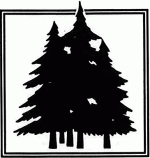In concert with the six New England states the U.S. Forest Service (USFS) has designed a national system to annually monitor the health of the Nation’s forests as an integral part of the USFS Global Change Program proposed under the Forest Ecosystems and Atmospheric Pollution Research Act of 1988. The program involves coordination with the U.S. Environmental Protection Agency’s Environmental Monitoring & Assessment Program (EMAP).
Currently, the Forest Service gathers data about the forest resource and its health in various ways, most notably, the periodic Forest Inventory and Analysis (FIA) surveys and specific insect and disease surveys the State and Private Forestry division of Forest Pest Management (FPM) coordinates through state forestry agencies or conducts on federal lands.
Forest Health Monitoring (FHM) will be a multi-tiered, long-term process to
- Detect unexpected deviation from established baseline conditions or trends
- Identity causes of change
- Define basic relationships sufficiently to predict consequences
Three monitoring levels are planned, with each successive tier requiring progressively more detailed and costly information:
- Detection monitoring. A geographically-based network of permanent plots coupled with remote sensing pest surveys distributed throughout U.S. forests.
- Evaluation monitoring. When detection monitoring identifies areas or problems of concern, a multidisciplinary team will determine specific evaluation needs and undertake activities such as additional surveys, site or area-specific evaluations, and more detailed monitoring.
- Research monitoring. Monitoring at this level provides data for ecosystem research undertaken to better understand causal relationships and to predict rates of changes in forest condition.
Implementation of the FHM program began this year in New England where the Service and the six State Forest agencies are collecting the first year’s data on approximately 250 detection monitoring plots. State foresters are providing the field cadre for this effort, and as forest health monitoring expands, it is expected that each state will provide the forestry personnel for the detection level plots each year, ensuring consistency and stability in the field observations.
Working with the EMAP, with adequate funding the Forest Service expects to fully implement the monitoring program over the next five years including efforts in the South and West. In September 1990, program representatives will be conducting a workshop at the LTER All Scientists Meeting in Estes Park, Colorado.
For more information, contact Joseph E. Barnard, National Coordinator, Southeastern Forest Experiment Station, P.O. Box 12254, Research Triangle Pane, NC 27709.

 Enlarge this image
Enlarge this image